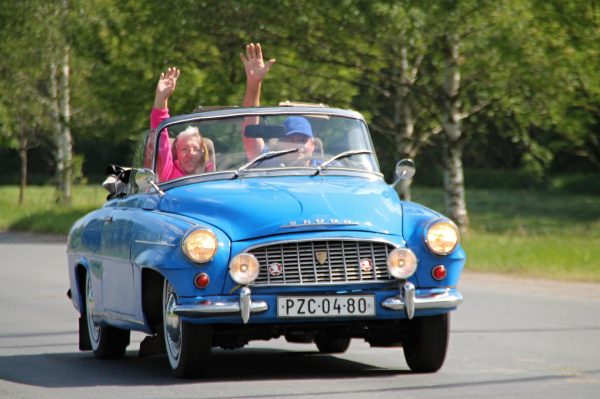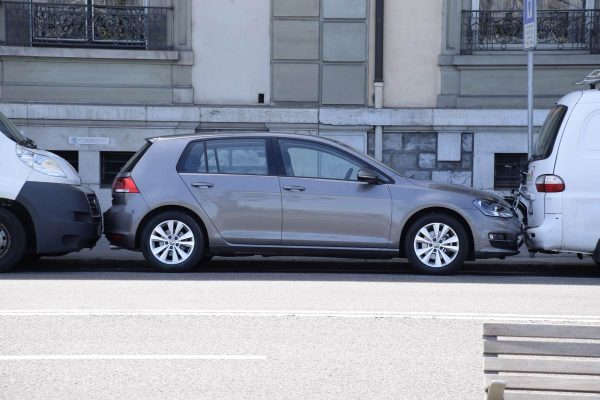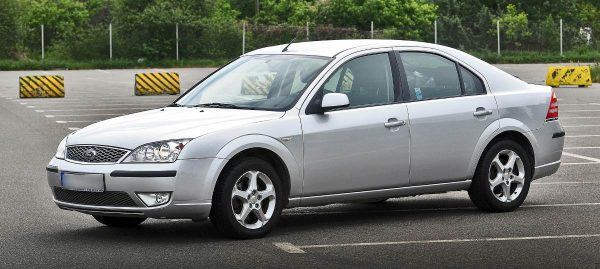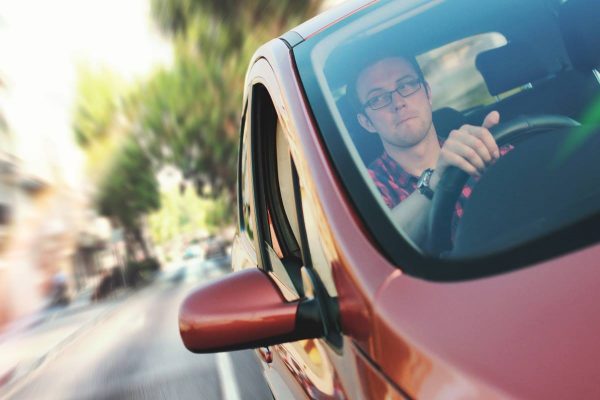How polite driving improves fuel economy and reduces traffic
It’s very British to be polite, but over the past few decades we’ve become less polite – we could blame American TV series where everything thinks it’s OK to be angry. But being polite behind the wheel – showing good driving etiquette – is better for your fuel economy, reduces wear and tear on your vehicle, improves traffic flow and leaves you feeling much less stressed about your journey.
A cheery wave
It’s good to give thanks to a driver who gave way when they didn’t have to, for example, to let you across a busy road. That driver then feels positive about the experience and will pay it forward, feeling more relaxed in their drive. A wave is part of basic courtesy on the road.
Motorcyclists who are filtering through the traffic can wave if someone specifically moves to let them through (but should be careful about taking their hand off the handlebars).
There’s no need to wave if someone is simply going about their business driving sensibly and within the law; the wave is the acknowledgement of kindness plus minor inconvenience that we British are so eager to embrace.

Indicate to communicate
The other way of communicating is using your indicators. Look at any list of things that annoy fellow motorists and not indicating is always on there. The Highway Code says you should only use your indicators when you intend to move out to or stop on the left or right.
Indicating is good for fuel economy because it enables drivers around you to adjust their speed and trajectory early, meaning they don’t have to brake hard.
If you’re looking for a driveway or business on the left and you are driving slowly, simply indicate so that people behind you know this. They’ll be able to overtake safely, without rushing and without holding up other vehicles behind.
Give learner drivers room
If you monster learner drivers from behind you simply make them nervous and they slow down more; tailgating burns more fuel. Give them room, then get past them when you can.
Leave appropriate gaps
Further to the tailgating fact above, leaving a gap helps you smooth out the traffic flow which helps reduce traffic jams. We don’t mean leaving 100m in slow traffic – just enough so that you absorb the fluctuation in speed of the traffic ahead without having to brake or accelerate. This will massively reduce your fuel consumption and it will help traffic behind you because they won’t be subjected to the constant brake/accelerate cycle and can flow more smoothly.
While driving in heavy traffic, leaving a gap can allow you to let someone turn across traffic without disrupting the flow of traffic behind you. Leaving a gap in appropriate places when you come to a stop lets people turn out of driveways and gives pedestrians more room to see. It also provides a bit of a buffer if someone runs into the back of you (leaving a bigger gap ahead of you is the best thing to do if someone is tailgating you).
Don’t jump into gaps in front of lorries without giving plenty of warning
Lorries leave bigger gaps ahead of them because it takes them longer to brake to a stop. Diving into a gap ahead of them compromises their options if traffic suddenly stops and you could cause an accident where a lorry runs into the back of you.
If you have to cut in front of a lorry, give plenty of warning with your indicator. This gives the driver time to create more room.
Don’t be a queue jumper
It’s not really cool to try to jump the queue – that just slows everyone down. The fastest queue speed is achieved where people join the queue while traffic is still moving freely. Drivers trying to push their way in when it’s already crawling just force other drivers behind to come to a complete stop.
Get in the correct lane early and you’ll reduce the impact of traffic, reducing the amount of fuel you use.
Harmonise your speed
There are two issues to address here: drivers that can’t maintain a consistent speed (therefore are constantly speeding up and slowing down) and drivers that can’t pick an appropriate speed (they want to drive at a different speed to everyone else).
In the first case, if you are always speeding up and slowing down, you’ll use a lot more fuel and you will annoy other drivers who want to overtake you.
In the second case, when everyone drives at the same speed, traffic flow is improved. All vehicles travelling at 60mph gives a better traffic throughput than some driving at 40mph, some at 50mph, some at 60mph and some at 70mph. This is why when it’s busy you’ll see variable speed limits that bring the speed down to the same as the average slower driver.
This means that slower drivers should speed up – if you can’t manage to drive at a ‘normal’ speed and you’re holding other drivers up, you should go on the internet and look for a driving instructor that can instil more confidence in your driving. It also means that fast drivers should slow down – you just make people nervous which causes them to drive more slowly; you also use far too much fuel.
Fix that smokey vehicle
Pedestrians, cyclists and motorcyclists bear the brunt of your badly maintained engine, but it ultimately affects everyone. It’s polite (and better for your fuel economy) to have a vehicle that’s running efficiently.
Park considerately
Don’t park in disabled parking bays unless you have the correct permit. Park between the lines, not over the lines.


Pay attention to what’s going on around you
Finally, let’s consider general attention when you’re driving. When the lights go green, you should be moving in 1-2 seconds, not putting your makeup down or having to react to the car behind you tooting the horn. If you dawdle away from the lights, you’re preventing as many vehicles getting through on that green phase, causing them to wait, burning fuel while they are idling.
Pay attention to other road users. Give cyclists 1.5m room when overtaking and watch out for them when you open your car door. Be decisive about what action you are going to take – signal the move and do it (if it’s safe)

Overall, be a conscientious driver that isn’t distracted by things unrelated to driving.
- Understanding the National Standards for Riding Mopeds and Motorcycles
- Livestock Transport Rules UK: A Complete Guide to Animal Transportation Requirements
- The Role of Safety Advisers in Dangerous Goods Transport
- Sustainable Driving: Reducing Your Environmental Impact on the Road
- Developing Effective Lesson Plans for Driver Training
- UK Agricultural Vehicle Registration and Tax Relief
- Challenges of Transporting Radioactive Materials (Class 7)
- Exemptions and support for Clean Air Zone charges
- Navigating Legal Requirements: The UK Motorcycle Licensing Rules
- Safe Transportation of Agricultural Chemicals and Hazardous Materials
- Innovations in Vehicle Construction for ADR Compliance
- Motorcycle Recovery Operations: How to Recovery a Broken Down Motorbike
- Alternative Fuels in Agricultural Vehicles
- Carriage of Dangerous Solids in Bulk Containers
- Understanding Limited Quantity Exemptions in ADR